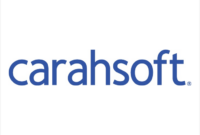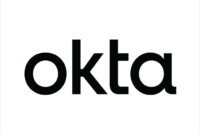Speakers
5 speakers
Date & Time
Dec 11, 2024 2:00 p.m. ET
Webinar
Technology
Please register on this page to watch the full discussion on demand.
A new year means a new administration — and new agency priorities. But federal agencies expect to continue working on providing better customer service to more Americans in 2025 and beyond.
Customer experience in the federal government is at a seven-year high, according to the American Customer Satisfaction Index’s annual scorecard.
Federal agency websites generally saw higher satisfaction scores than their call centers. They also saw higher scores on handling customer complaints — and outperformed industries such as TV subscription services, food delivery, internet service providers and social media sites.
Looking ahead to 2025 and a new presidential administration, agencies are looking to build momentum behind their CX projects, and are making the case that better service delivery to the public leads to a more efficient government.
Mo Earley, acting director of federal customer experience at the Office of Management and Budget, said the 38 agencies designated as High-Impact Service Providers (HISPs) are leading this work.
“There’s folks who have really made a lot of progress in rethinking the way that they do service delivery. It’s not just driven by the bureaucracy,” Earley said. “It’s really driven by the fact that customers are saying that, ‘We are struggling in this area, or we really would like this feature,’ and they are actively iterating and trying to bring those items and those processes and features into the way that they deliver in government.”
High-Impact Service Providers lead the way
HISP agencies provide customer-facing services to the people they serve. These includes agencies that interact with a large share of the population, handle a high volume of customer transactions or provide services that have an outsized impact on the lives of their customers.
HISPs have been around since 2018, but the federal government has spent decades on effort to provide a level of customer service that the public expects from private-sector companies.
“That goal, that kind of marching order, has always been to meet or exceed the level of service that people experience in the private sector,” Earley said.
Digital-first, not digital only
Among these shifting expectations, customers expect the ability to apply or track the status of benefits or services online and through mobile-friendly forms. OMB is calling on agencies to adopt a “digital first,” but not digital approach to customer experience. Earley said that approach means meeting customers where they are, and making it easy for customers to easily interact with agencies — whether that’s in person, through the mail, over the phone or online.
“You can’t just digitize everything and have it be better. You still have to listen to your customers at the core. But there is a lot that we are trying to do and that people are actively doing to keep up with the way that the private sector is leading,” Earley said.
OMB also sees customer experience as an opportunity to improve government efficiency and reducing the “time tax,” or administrative burden that customers go through when applying for benefits.
Earley said HISP agencies are making government services more efficient by making it easier for customers to find answers to their questions, and without having to navigate multiple websites or make multiple phone calls. HISPs are also simplifying the language on forms and reducing confusing jargon.
“These improvements about making things more efficient, and not only make people’s lives better because they can get what they need, but also employees are less frustrated when we fix processes that cause them a lot of time and it allows them to do a lot more high-value work,” Earley said.
‘National security done well can facilitate customer experience’
Several agencies have named chief customer experience officers, and more than 10 department-level CX team exist across the federal government.
“We see people getting training and rethinking about the way that they do their jobs. We see more people than ever that are actually collecting customer feedback about these services,” Earley said. “Organizations are fundamentally shifting the way in which they are taking customer perspectives, not only in mind about how they’re thinking about things, but those perspectives are actually shaping decisions in a way that they were not several years ago.”
The Department of Homeland Security created its own CX directorate in 2023. Customs and Border Protection, the largest law enforcement agency in the U.S., and also its largest trade organization, is helping to lead on those CX efforts.
“National security done well can facilitate customer experience at the same time,” said James McCament, CBP’s presidential transition lead and senior executive responsible for experience. “For us, it’s an ability to focus, make that process as smooth and efficient as possible.”
CBP screens more than a million people who enter the U.S. through land, air, and sea ports of entry, and processes nearly $6 trillion in goods every year.
“We’re proud of the volume of our success. It also means that where there are challenges, questions, and quite frankly, mistakes,” McCament said. “We’re focused on that feedback, to try to get ahead of concerns and complaints and address those.”
McCament said CBP in 2023 collectively eliminated 4 million “burden hours” for its workforce and for customers through the adoption of new technologies and process improvements.
“Every investment is an exponential return on investment. When we’re using more automation, AI, some of our complexity of service is being reduced in the technology space, so that we can ensure that what our officers and agents are trained to do, that’s what they can focus on. And the administrative burdens go off their shoulders, just as it does for the customers,” he said.
CBP last year rolled out its Vessel Entrance and Clearance System (VECS), a digitized process that automated many parts of a previously paper-based process. McCament said VECS reduced human error on paperwork and saved $10 million in work hours by eliminating a “heavy amount of the burden on our employees.”
McCament said CBP is communicating the benefits and return on investment of its customer experience efforts as part of transition talks with the incoming Trump administration.
“The reminder and the emphasis as we are preparing the briefings for the transition team is customer experience at all times is very important,” he said. “We emphasize that CBP experience, which is intended to really focus on what our employees need to deliver that national security mission, and also what those returns on investment are.”
Meet the newest HISP agency
OMB recently named the Commerce Department’s International Trade Administration as a new HISP agency. Stan Kowalski, ITA’s director of organizational excellence and strategic delivery, said the agency volunteered to become a HISP.
“We do a lot of great work which impacts the U.S. economy. And so, we saw HISP as a high distinction. There aren’t that many HISPs in the federal government, and we really appreciate the opportunity to become one, and to have that spotlight on us and every other HISP so that we can actually help to advance the CX practice really across the federal government,” Kowalski said.
Among its customers, ITA helps small and medium companies trying to grow in overseas markets. It also works with development organizations to help bring foreign investment into the U.S.
“We have quite a variety of customers, but they, the organizational level, have a direct impact on the U.S. economy,” Kowalski said.
As a newly designated HISP agency, ITA has launched ‘voice of the customer” and “voice of the employee” initiatives to identity opportunities to service delivery.
Kowalski said customer experience and employee experience are “both sides of the same coin,” and that ITA is also standardizing the way it gathers survey feedback from its customers.
“Like every organization, we have had customer relationship surveys that have been conducted by all the business units. But we’re now bringing those together under the same platform, so that we can actually standardize how they are done. But more importantly, how we can aggregate the feedback from customers and be able to share that across the organization to drive specific improvements,” he said.
Another component of the Commerce Department, the Patent and Trademark Office, helps individuals and businesses protect their intellectual property and to turn their ideas into marketable products.
Usability testing at USPTO
Charlie Thomas, USPTO’s director of customer experience, said the agency is replacing its legacy trademark filing system.
“Two themes, over several years of feedback, had emerged: Please make it easier to save a draft, a very reasonable thing. We’ve come to expect that on everything that we fill out. Also, make the total cost more transparent before I get to the end — again, something we’ve grown to expect as consumers on any platform,” Thomas said.
USPTO developed a prototype of its new filing platform, but through usability testing, the agency received valuable feedback that led to further improvements once customers tested out the new system.
“We were confident in the solution, because we had the data to see what was driving low satisfaction. But then we did usability testing,” Thomas said. “People were unaware that auto save was happening and saving on navigation, and people just visually overlooked where we put the fee calculation. We made subtle tweaks, retested, we had figured it out.
Thomas said USPTO expects to fully launch its new trademark filing system in January 2025.
HUD builds one-stop shop for customer feedback
The Department of Housing and Urban Development supports American housing need and enforces fair housing laws, but works mostly with state and local governments, as well as nonprofits and other private entities to administers its programs.
Joe Carter, HUD’s director of customer experience, said a majority of the HUD’s programs don’t directly interact with the public, but that those programs provide a public impact.
“A lot of what we’re focused on is how can we improve that experience for the public by working with our partners to ensure that they have the support and resources that they need,” Carter said.
To further improve service delivery, HUD recently launched a one-stop shop on its website to collect customer feedback. Over the past year, HUD saw a 400% increase in the amount of customer feedback collected — from 5,000 records to over 28,000 records.
HUD also conducted one-on-one interviews with over 150 people either received HUD services or work directly with HUD on service delivery. Carter said these interviews are helping HUD identity pain points and the metrics it should be looking at.
“What we’re doing right now is actually creating a CX plan based on all the data that we’ve collected this past year to set SMART objectives — specific, measurable, actionable, realistic, and time bound. And that will then drive us towards specific, certain metrics,” Carter said.
Speakers

Mo Earley
Portfolio Lead, Federal HISPs
OMB

Joe Carter
Director of Customer Experience
HUD

James McCament
CBP Presidential Transition Lead & Senior Executive Responsible for Experience, Customs and Border Protection
DHS

Stan Kowalski
Director, Organizational Excellence & Strategic Delivery
ITA

Charles Thomas
Director of Customer Experience
USPTO
Please register using the form on this page.
Have questions or need help? Visit our Q&A page for answers to common questions or to reach a member of our team.






